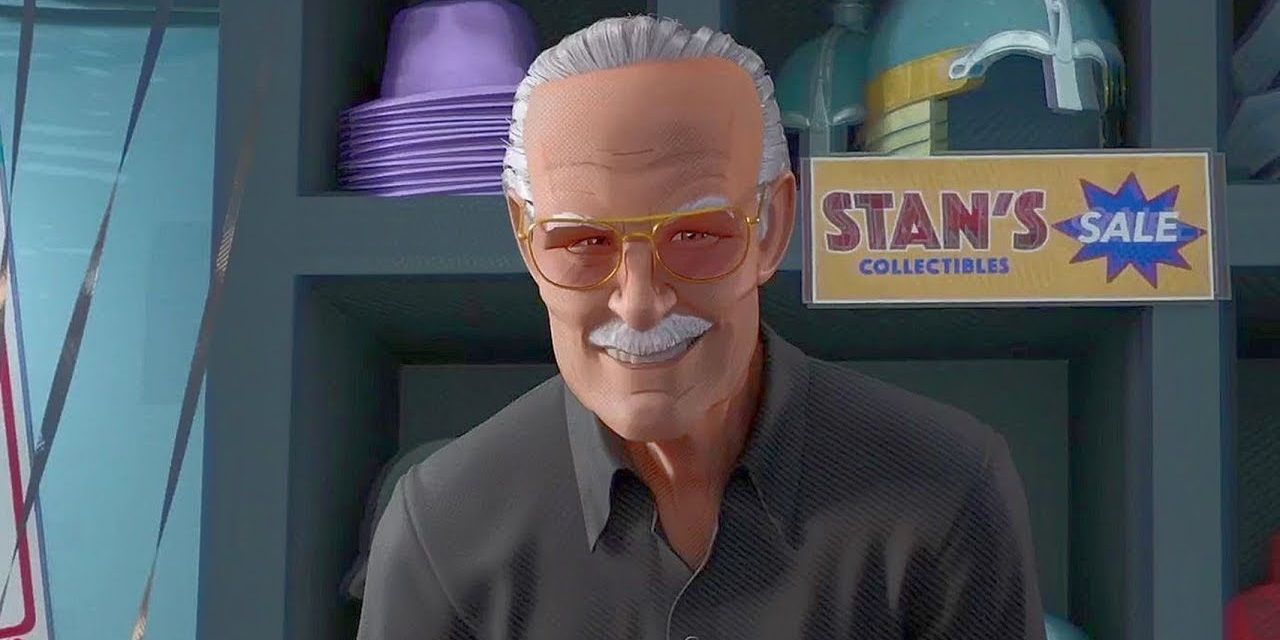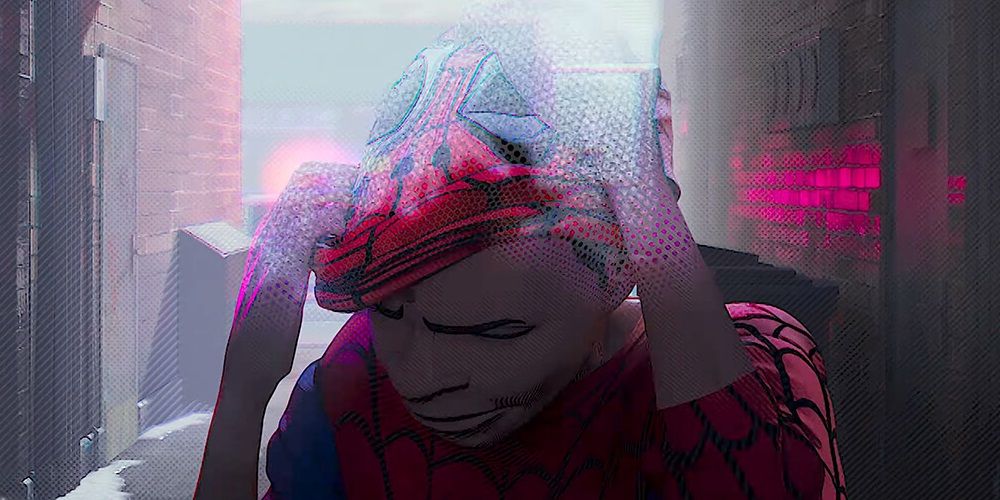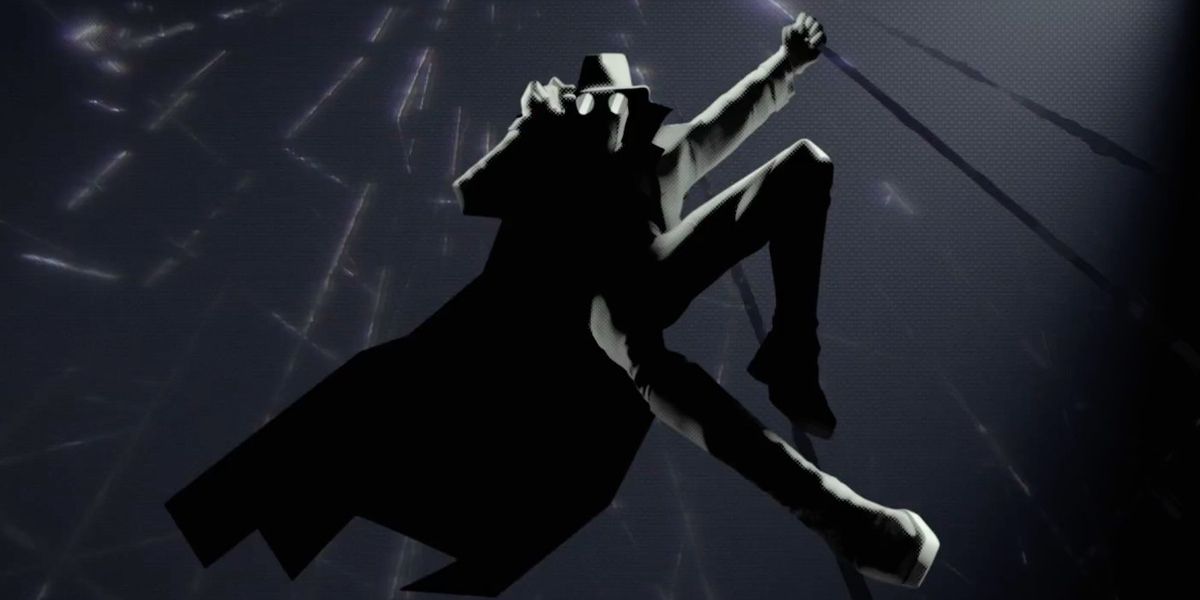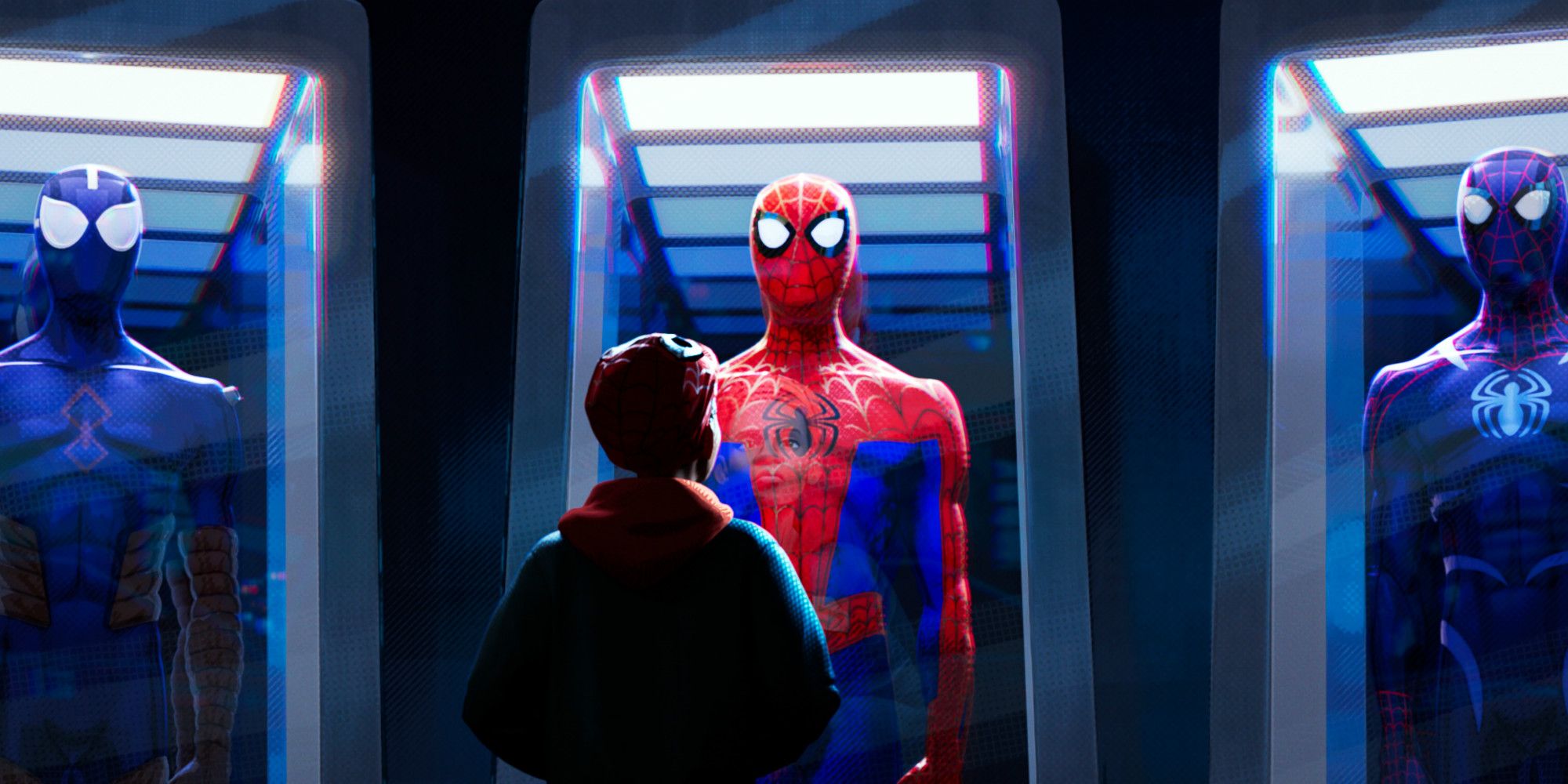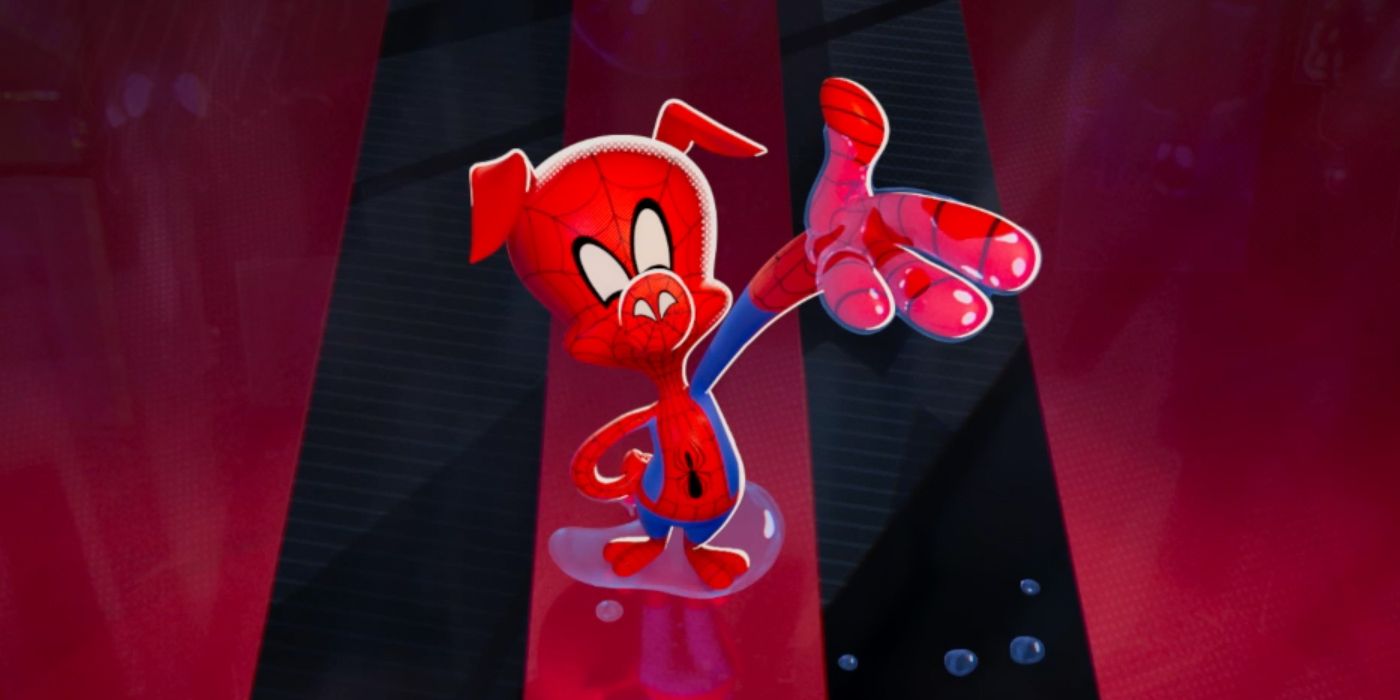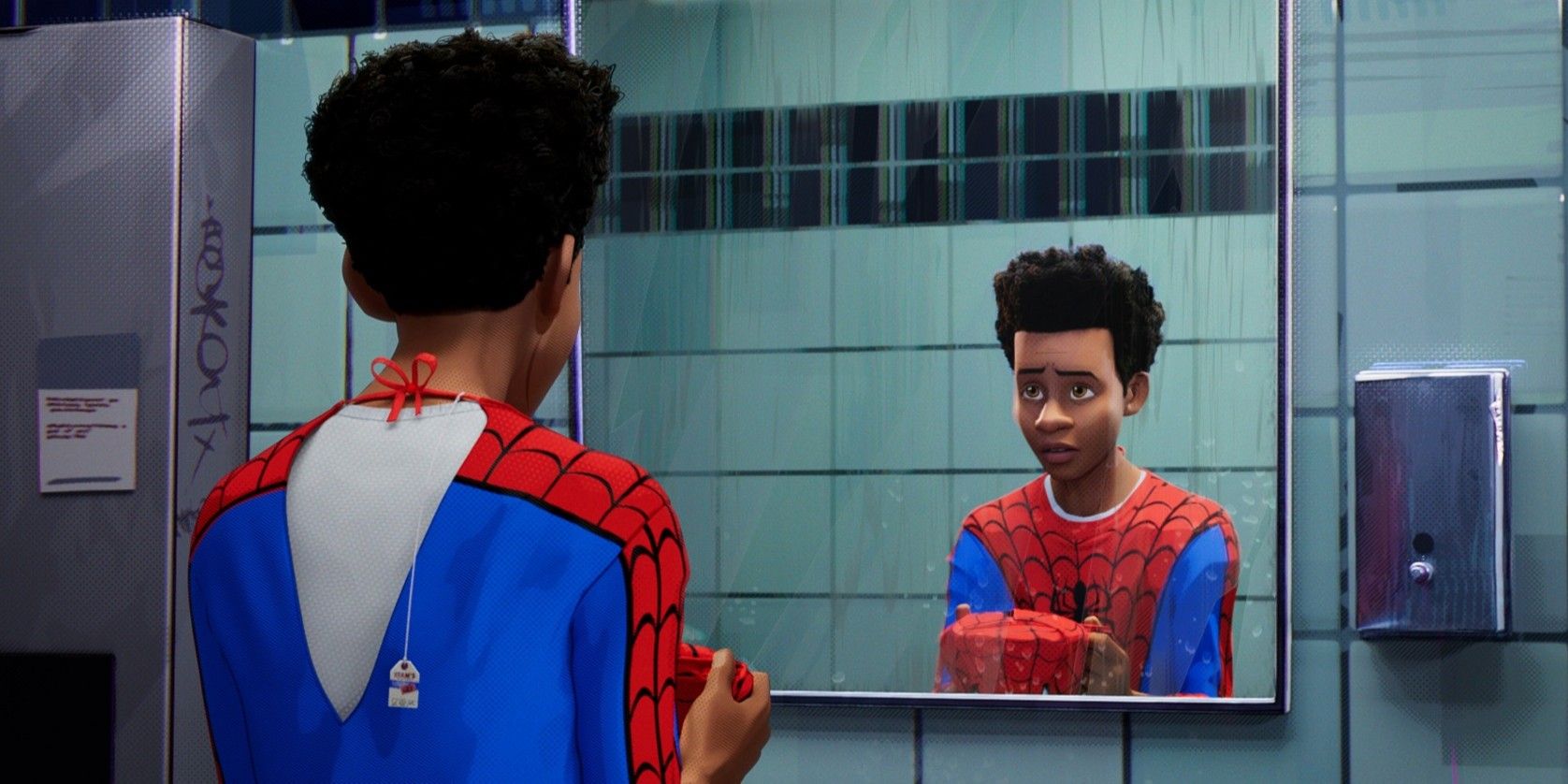After the debacles of Spider-Man 3 and The Amazing Spider-Man films, Sony proved they’re not totally useless when it comes to bringing Spidey to the big screen with Spider-Man: Into the Spider-Verse, one of the most beautiful animated movies in recent memory.
Finally giving the Miles Morales incarnation of the character a chance to shine on the silver screen, Into the Spider-Verse was an interdimensional adventure that never lost sight of its focus on Miles and his hero’s journey. A lot of hard work went into bringing this gorgeous piece of cinema to life. Here are 10 behind-the-scenes facts about Spider-Man: Into The Spider-Verse.
All The Animators Wanted To Draw Stan Lee, So He Appears In Every Train In The Movie
The makers of Spider-Man: Into the Spider-Verse wanted to create something special with Stan Lee’s cameo appearance, which ended up being his final voice acting role.
Since the 180 animators working on the movie were all big Marvel fans who wanted to draw Stan Lee, he appears in more scenes than just his cameo. He can also be seen sitting in pretty much every subway train featured in the movie. Hit pause whenever a train goes past and you’ll probably see him.
Lily Tomlin Is The Fourth Oscar Nominee To Play Aunt May
Lily Tomlin was the actor that the writers of Into the Spider-Verse had in mind when they were writing their badass incarnation of Aunt May, so they were ecstatic that she accepted the role.
Tomlin continues the tradition that Aunt May is played by Oscar nominees: Rosemary Harris was nominated for her supporting turn in Tom & Viv; Sally Field has been nominated three times, winning twice; and Marisa Tomei has also been nominated three times, winning once. Tomlin received a nod for her performance in Robert Altman’s Nashville.
Into The Spider-Verse’s Most Iconic Moment Was In The Script Since The Very First Draft
The most iconic moment in Spider-Man: Into the Spider-Verse, when Miles takes a leap of faith and truly becomes Spidey as he swings through the streets of New York, was a part of the script going back to the very first draft.
This shot defines the beauty of the movie, and was used as the heart of the studio’s marketing campaign.
Miles’ Invisibility Would Be Depicted Went Through 70 Designs
The two powers that distinguish Miles Morales from the other characters who have held the title of Spider-Man are venom strike, which is the ability to electrocute people by touch, and invisibility.
The invisibility was a tough one for the animators to depict on-screen. The portrayal of Miles’ invisibility in the film went through around 70 different designs before settling on what it would look like.
Nicolas Cage Based His Portrayal Of Spider-Man Noir On Humphrey Bogart
As a lifelong comic book fan, Nicolas Cage was excited to be offered the role of Spider-Man Noir in this movie, and even more excited when the filmmakers told him to have fun with it.
Since his version of Spidey is a hard-boiled detective from the 1930s, depicted in black-and-white inspired by classic film noirs of that era, Cage took inspiration from Humphrey Bogart — one of the icons of the film noir movement — in his fast-talking vocal performance. Cage believed that his Spider-Verse character would appeal to both adults who like noirs and kids who are interested in learning about them.
The Animation Is Designed To Immerse You In The Pages Of A Comic Book
The uniquely gorgeous animation style of Spider-Man: Into the Spider-Verse was designed to immerse viewers in the pages of a comic book. This was achieved by adding a hand-drawn touch on top of state-of-the-art computer-generated animation. Every single frame was refined by artists after it was rendered through a computer, so the final image would be lovingly crafted by hand.
It usually takes a team of animators a week to create four seconds of animation, but on Into the Spider-Verse, it took the animators a month to create four seconds. Peter Ramsey had the novel idea not to use any visual comic book language (e.g. panels and verbalized sound effects and word bubbles) until after Miles was bitten by the radioactive spider.
Spidey’s Christmas Album Wasn’t Originally Going To Be Released
One of the funniest gags in Into the Spider-Verse involves a Christmas album released by Spider-Man. But the album was never supposed to be released. Phil Lord and Christopher Miller came up with the idea when they were already scoring the finished film. Chris Pine, the Peter Parker of Miles’ reality, had shown off his singing abilities in Into the Woods and Wet Hot American Summer: First Day of Camp, but the filmmakers were unaware that he could sing until he came in and blew them away with a Spidey-themed holiday track.
The tracks on Spidey’s Christmas album include: “Swingin’ Around the Mistletoe,” “Joy to the World (That I Just Saved),” and “It’s Beginning to Look a Lot Like a Non-Denominational Holiday.”
John Mulaney’s Spider-Ham Originally Swore A Lot
Playing Spider-Ham in Spider-Man: Into the Spider-Verse marked stand-up comic John Mulaney’s first appearance in a theatrically released film. The producers encouraged him to have fun with the role and play around with his dialogue.
Mulaney did exactly that in the recording studio and ad-libbed a lot of curse words until he finally asked what rating the filmmakers were going for and he was told it would be PG-rated.
Peter And Mary Jane’s Divorce Is A Reference To Sam Raimi’s Unproduced Spider-Man 4 Script
In the alternate universe featuring Peter B. Parker, he’s going through a messy divorce with Mary Jane Watson. This is a reference to an unproduced script draft that Sam Raimi was working on for Spider-Man 4. Peter and M.J. would’ve been married and later gotten divorced when it was revealed that Peter had an affair with Felicia Hardy.
Raimi later changed his mind about this storyline, feeling that it made Peter too unlikable, and the film was canceled when Sony refused to give Raimi the time to rewrite it.
A Lot Of Miles’ Characterization Came From Shameik Moore’s Performance
According to Rodney Rothman, one of Into the Spider-Verse’s co-directors, a lot of Miles’ characterization came from Shameik Moore’s performance. He landed the role instantly when his first dialogue tests blew the filmmakers away.
The animators weren’t just animating Miles around the words he was saying; Moore communicated unscripted emotions and body language just in how he delivered the lines, giving the animators a lot more to work with when it came to characterizing the protagonist.


